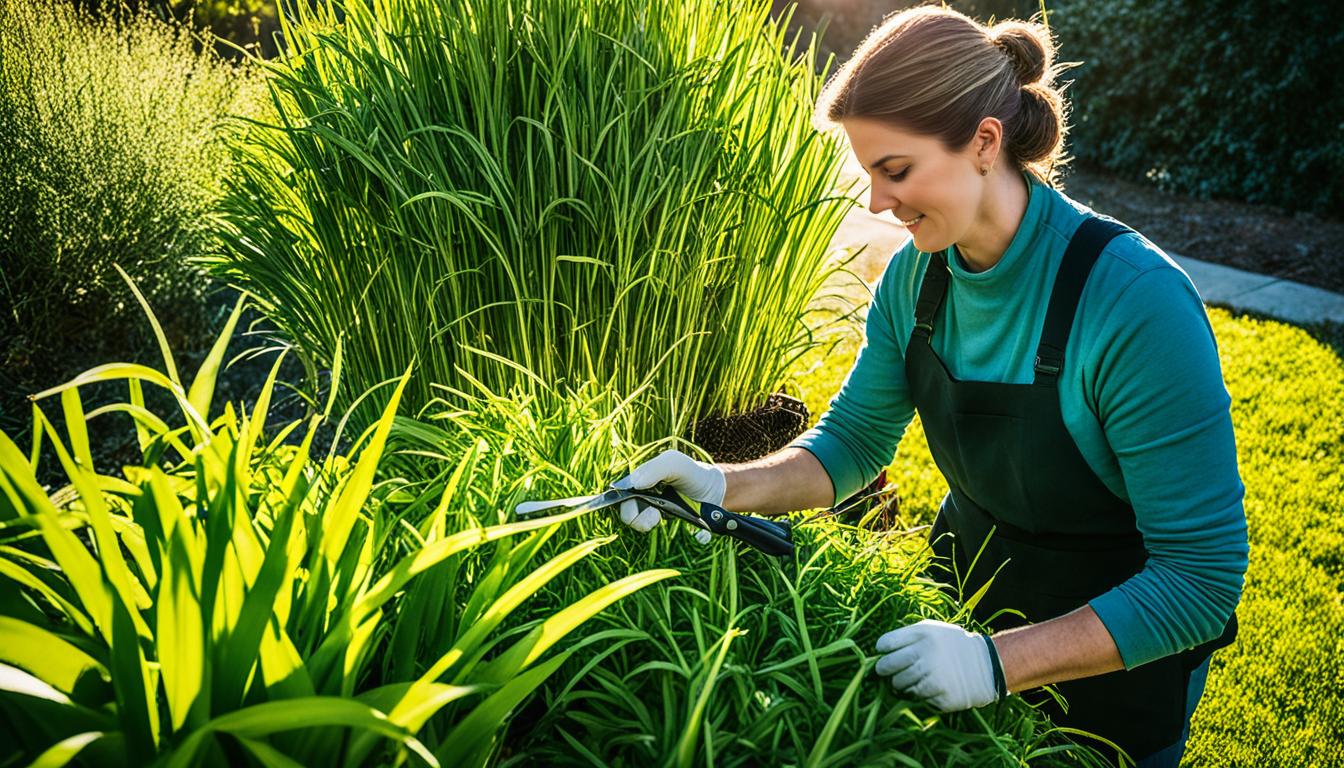I love growing and using lemongrass leaves for tea. This herb is key in many cuisines like Thai, Vietnamese, Indian, and Malaysian. It’s not just for cooking; it’s also great for health, helping with inflammation, lowering cholesterol, and easing anxiety.
This guide will teach you how to harvest lemongrass leaves for tea. It’s perfect for both new and experienced lemongrass growers. You’ll learn how to get the best flavor and aroma from this amazing herb.
We’ll cover everything from lemongrass varieties for tea to how to keep it going all year. This guide will help you make the most of your lemongrass. Let’s start making the perfect homemade lemongrass tea together!
Introduction to Lemongrass: A Versatile Herb
Lemongrass is a popular herb known for its unique citrusy smell and taste. It comes from Southeast Asia and is loved worldwide for its many uses in cooking and health benefits. There are over 55 types, but only East Indian and West Indian lemongrass are often used for tea and food.
Varieties of Lemongrass Used for Tea and Cooking
The East Indian and West Indian lemongrass are the top choices for tea and cooking. They both have a strong citrus flavor, making them key in many Asian dishes. You’ll find them in Thai curries and Vietnamese soups.
Health Benefits of Lemongrass
- Lemongrass is full of antioxidants that fight off oxidative stress and damage.
- It has anti-inflammatory properties that can lessen inflammation in the body.
- Its compounds might help lower cholesterol levels and support heart health.
- Lemongrass is thought to have calming and anxiety-reducing effects. It’s often used in traditional medicine and aromatherapy.
Enjoying lemongrass tea or adding it to your dishes brings a unique flavor. Its health perks and versatility make it a must-have in any kitchen.
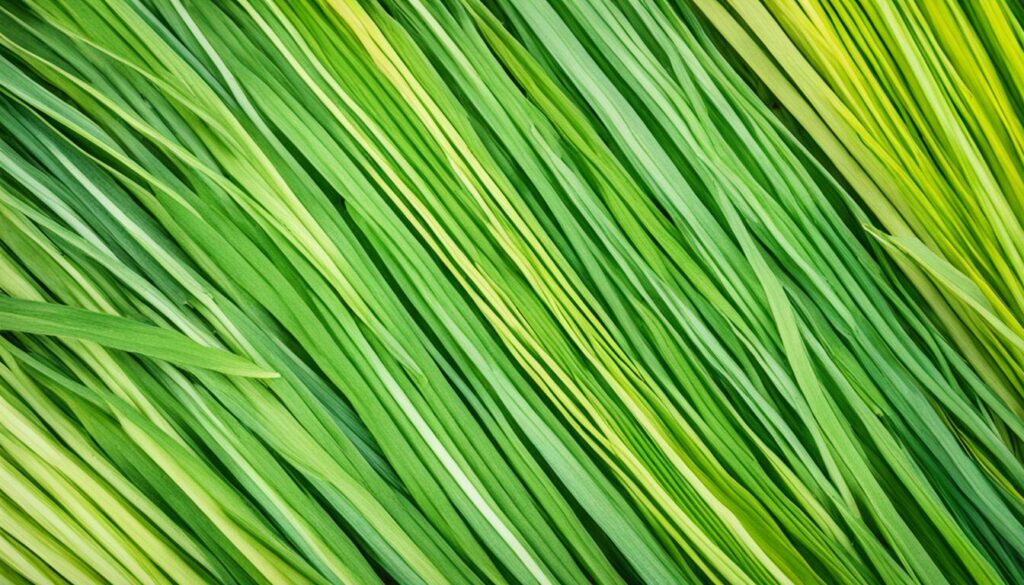
“I absolutely love the scent of lemongrass and try to incorporate it into various products like lotions and soaps whenever I can.”
Growing Lemongrass: Tips for Successful Cultivation
Want to add lemongrass’s refreshing flavor to your kitchen? Growing it yourself is rewarding. This versatile herb loves warm, tropical climates and grows well in gardens and containers. With simple tips, you can have a lot of this aromatic plant.
Planting and Caring for Lemongrass
Lemongrass plants can grow 3 to 5 feet tall. They prefer soil that drains well and has a pH of 6.5 to 7.0. Plant them 24 inches apart in full sun for best growth. They can handle drought but do well with regular water, especially in summer.
Feed your lemongrass with a water-soluble plant food every couple of weeks. It keeps insects away, making it a great garden addition.
Propagating Lemongrass for Continuous Supply
Lemongrass is easy to spread. Once it’s grown, take a stalk, remove the outer leaves, and put it in water. Wait for roots to grow, then move it to soil for more lemongrass.
This plant is usually perennial but may need indoor care in cold areas. When it gets cold, it dies back but can come back with the right care.
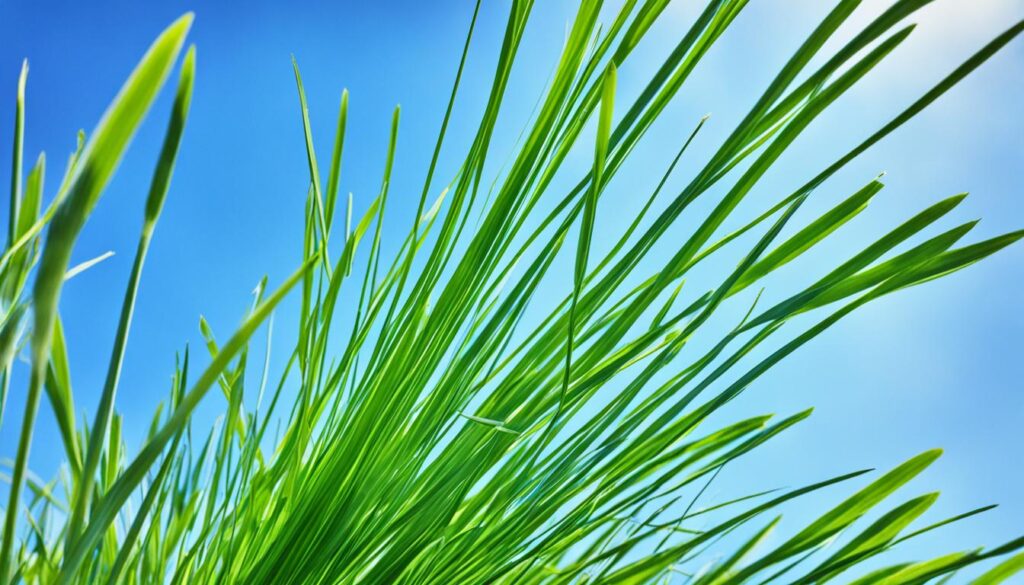
Follow these tips for how to grow lemongrass, lemongrass growing conditions, and lemongrass propagation. Enjoy its flavors and benefits all year, whether in containers or your garden. With care, your lemongrass will thrive and give you plenty of this key ingredient for cooking.
How to Harvest Lemongrass Leaves for Tea
Harvesting lemongrass leaves for tea is easy and rewarding. It gives you a steady supply of this fragrant and flavorful herb. Whether you grow your own or buy it, the right techniques help you get the best from this versatile plant.
Techniques for Harvesting Lemongrass Leaves
Start by wearing gardening gloves to protect your hands. Use sharp scissors or a clean knife to cut the leaves from the base. Make sure not to cut too deep to avoid damaging the stalks and slowing growth.
After cutting, dry the leaves for later use. Hang them up in a well-ventilated area, like a window, using twine or a drying rack. Let them dry completely, which can take 2 to 4 hours, depending on your environment.
Once dry, cut the leaves into 2-3 inch pieces for easier use in tea. Store them in an airtight container, like a glass jar, to keep their flavor and aroma. To make tea, add the desired amount to your teapot or infuser and steep in hot water for 5-7 minutes.
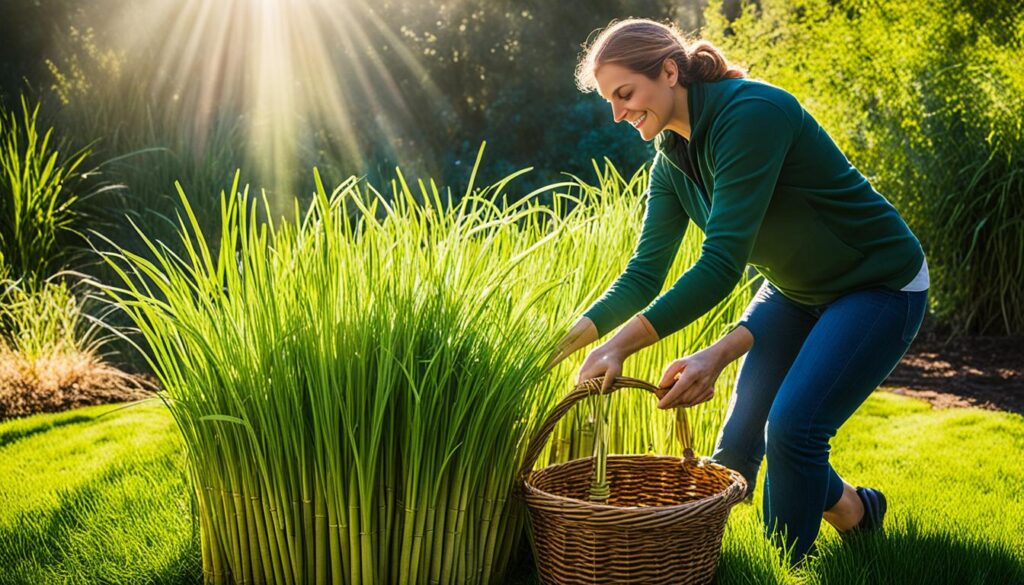
By following these simple steps, you can enjoy the delightful taste and aroma of homegrown lemongrass tea. It’s a rewarding and satisfying way to enhance your daily routine or explore new herbal blends.
Preserving and Storing Lemongrass
Lemongrass is a versatile herb that can be enjoyed all year. By using simple preservation methods, you can keep its fresh flavor and aroma. Drying and freezing are two great ways to do this.
Drying Lemongrass for Long-Term Storage
Drying lemongrass is easy and keeps it fresh for longer. To dry lemongrass leaves, tie them up in a spot with good air flow, like a window. For thicker stalks, remove the outer leaves, cut them into smaller pieces, and dry them out.
You can spread them on a baking sheet or hang them in bunches. Drying takes 2-4 hours in a dehydrator or in a warm, dry place. Once dry, store it in airtight containers or bags for later use in recipes or teas.
Freezing Lemongrass for Convenient Access
Freezing is a great way to keep lemongrass fresh for later. Cut the stalks into the size you like and put them in airtight bags or containers. Frozen lemongrass stays good for up to 6 months, letting you enjoy its flavor all year.
When you’re ready to use it, just take out the frozen lemongrass and add it to your dishes or teas.
Using these preservation methods, you can keep lemongrass fresh and tasty, even when it’s not in season. Whether you dry or freeze it, you’ll always have lemongrass for your cooking and drinks.
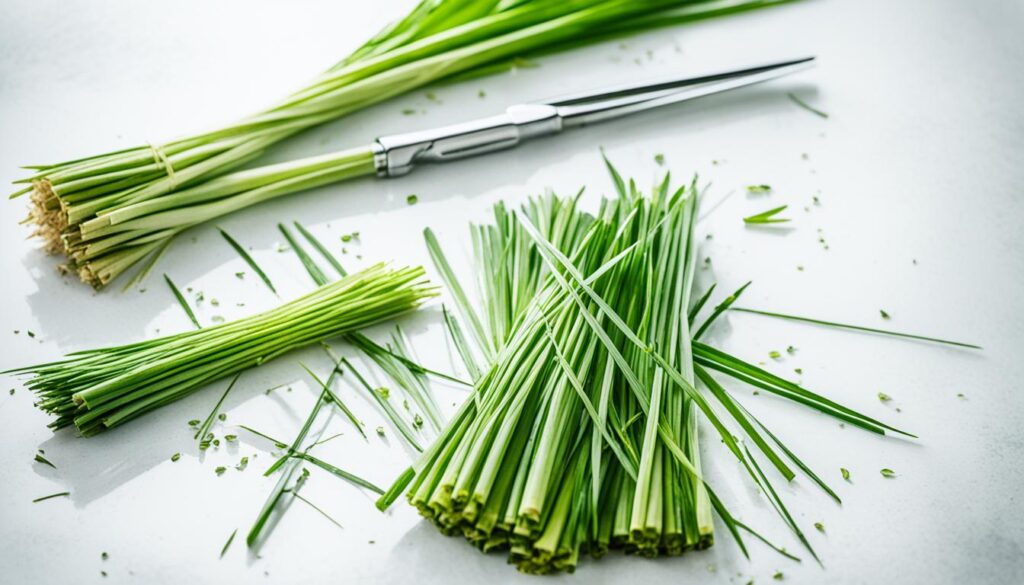
Conclusion
Harvesting lemongrass leaves for tea is easy and rewarding. By growing my own lemongrass and learning how to harvest it right, I can enjoy its fresh taste and smell. I can use it in homemade teas and recipes all year by drying or freezing the leaves.
Lemongrass tea has many benefits, like lowering fever and helping with digestion. It also fights bacteria and has antioxidants. The compound citral gives lemongrass its lemony smell, making it a favorite in many foods and drinks.
Whether I’m drinking a warm lemongrass tea or adding it to my cooking, lemongrass is key to my wellness and cooking. Learning to harvest and preserve lemongrass lets me enjoy its benefits all year. I love sharing this versatile herb with my loved ones.
FAQ
What varieties of lemongrass are used for tea and cooking?
Only the East Indian and West Indian types are used for tea and cooking. There are over 55 types of lemongrass.
What are the health benefits of lemongrass?
Lemongrass helps reduce inflammation, lower cholesterol, and ease anxiety. It has many health benefits.
How do I grow lemongrass successfully?
Lemongrass loves full sun and moist, well-draining soil. It’s drought-tolerant and can grow in containers or as a decorative grass. To grow lemongrass, take a stalk, remove the outer leaves, and put it in water until roots appear. Then, transplant it.
How do I harvest lemongrass leaves for tea?
Use gardening gloves and herb scissors to cut the leaves from the lemongrass base. Dry them for tea. String the leaves in a window to dry. Once dry, cut them into 2-3 inch pieces and store in a jar.
How can I preserve lemongrass for future use?
You can dry or freeze lemongrass for later use. Dry the leaves by stringing them in a window. For thicker stalks, remove leaves, cut into pieces, and freeze in bags or containers. Frozen lemongrass keeps for up to 6 months.
